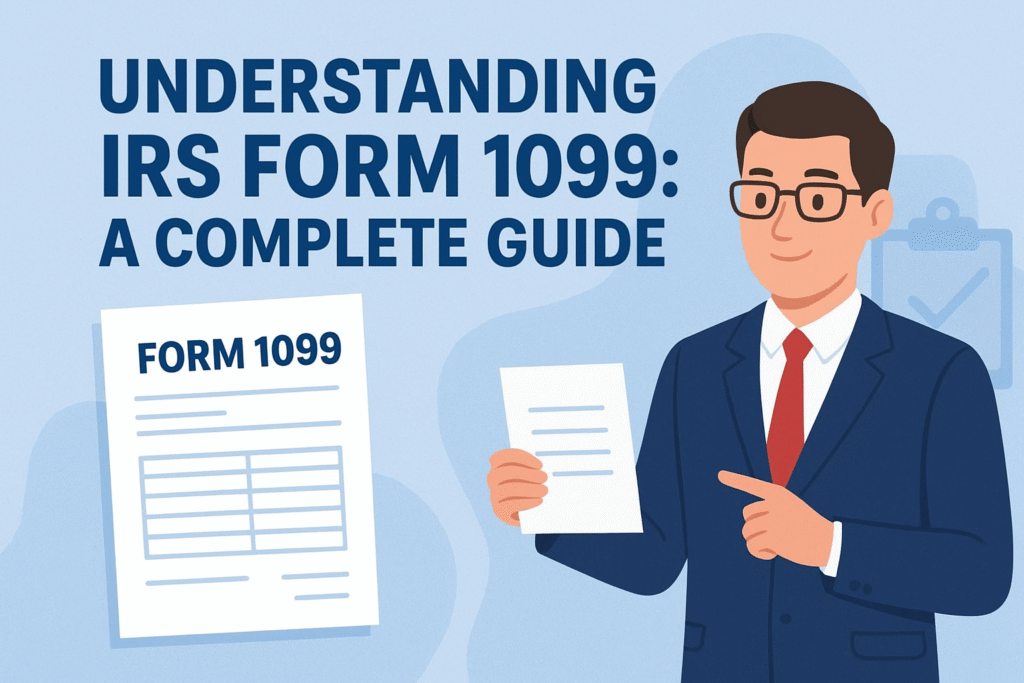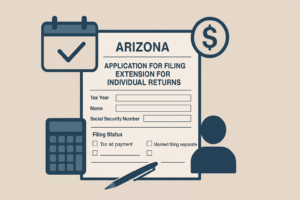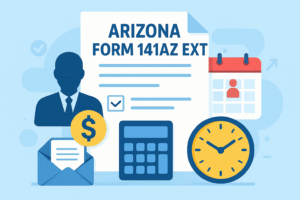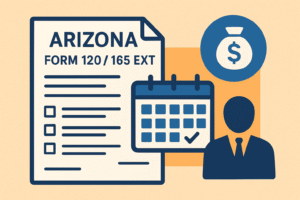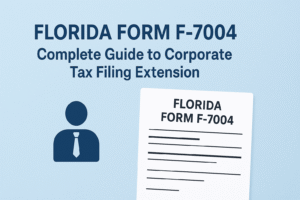Form 1099 is one of the most widely used information returns in the U.S. tax system. If you run a business, work as an independent contractor, or receive certain types of income outside traditional wages, chances are you’ll come across Form 1099. The IRS relies heavily on 1099s to track taxable income and ensure compliance. Because there are multiple types of 1099 forms, each serving different purposes, it is critical to understand their function, filing requirements, and deadlines to avoid costly mistakes.
What Is Form 1099?
Form 1099 is an information return used to report various types of non-wage income to the IRS and recipients. Unlike Form W-2, which reports employee wages and withholdings, 1099s cover a broad range of payments such as freelance earnings, bank interest, dividends, government payments, debt cancellations, real estate transactions, and more.
In simple terms, if you earned money that didn’t come from a traditional employer, you may receive a 1099. The payer is responsible for filing the form with the IRS and providing a copy to the recipient.
Who Must File Form 1099?
Businesses, financial institutions, and government entities generally have the responsibility to file Form 1099. Specifically, a payer must file if:
- They paid $600 or more in a year to a contractor, freelancer, or vendor for services.
- They paid interest, dividends, or other investment income of $10 or more.
- They distributed government payments such as unemployment benefits, tax refunds, or grants.
- They issued proceeds from real estate sales, retirement plans, or debt cancellation.
Essentially, if your business or organization made payments outside of regular payroll that fall within IRS-reportable categories, you are required to file the appropriate type of 1099.
Who Should Receive Form 1099?
Recipients of a 1099 include individuals, sole proprietors, partnerships, and sometimes corporations (with exceptions). A recipient should expect a 1099 if they received:
- Non-employee compensation (freelancers, independent contractors).
- Investment income (dividends, interest, original issue discount).
- Government payments (unemployment, tax refunds, state grants).
- Proceeds from real estate or retirement plan distributions.
- Long-term care benefits, gambling winnings, or other taxable payments
Employees, on the other hand, do not receive a 1099. Their income is reported on a W-2.
What Are the Variants of Form 1099?
The IRS issues more than 20 types of Form 1099, each covering different income streams. Below is a detailed list with their primary purposes:
| Form | Purpose | Who Must File | Recipient Deadline | IRS Filing Deadline |
| 1099-NEC | Reports non-employee compensation (independent contractors, freelancers, service providers). | Businesses or organizations paying $600+ for services. | Jan 31 | Jan 31 (both paper & e-file) |
| 1099-MISC | Reports miscellaneous income (rent, prizes, awards, royalties, medical payments). | Businesses paying $600+ in miscellaneous categories. | Jan 31 | Feb 28 (paper), Mar 31 (e-file) |
| 1099-INT | Reports interest income ($10 or more). | Banks, credit unions, financial institutions. | Jan 31 | Feb 28 / Mar 31 |
| 1099-DIV | Reports dividends and investment distributions. | Corporations, brokers, financial institutions. | Jan 31 | Feb 28 / Mar 31 |
| 1099-B | Reports broker and barter exchange transactions (stocks, bonds, crypto via broker). | Brokers and barter exchanges. | Feb 15 | Feb 28 / Mar 31 |
| 1099-S | Reports real estate sales or exchanges. | Closing agents, real estate professionals. | Feb 15 | Feb 28 / Mar 31 |
| 1099-R | Reports retirement distributions (pensions, annuities, IRAs, 401(k)). | Financial institutions, plan administrators. | Jan 31 | Feb 28 / Mar 31 |
| 1099-G | Reports government payments (unemployment, state tax refunds, grants). | Federal, state, or local government agencies. | Jan 31 | Feb 28 / Mar 31 |
| 1099-C | Reports cancellation of debt (e.g., credit card, mortgage). | Lenders, banks, credit card companies. | Jan 31 | Feb 28 / Mar 31 |
| 1099-LTC | Reports long-term care insurance & accelerated death benefits. | Insurance companies. | Jan 31 | Feb 28 / Mar 31 |
| 1099-OID | Reports original issue discount on bonds/notes. | Banks, financial institutions. | Jan 31 | Feb 28 / Mar 31 |
| 1099-Q | Reports distributions from 529 plans (qualified education programs). | Educational institutions, plan administrators. | Jan 31 | Feb 28 / Mar 31 |
| 1099-QA | Reports distributions from ABLE accounts. | ABLE program administrators. | Jan 31 | Feb 28 / Mar 31 |
| 1099-SA | Reports distributions from HSAs, Archer MSAs, and MA MSAs. | Banks, HSA custodians. | Jan 31 | Feb 28 / Mar 31 |
| 1099-K | Reports payment card and third-party network transactions (PayPal, Venmo, Square, etc.). | Payment processors, third-party networks. | Jan 31 | Feb 28 / Mar 31 |
| 1099-DA | Reports digital asset transactions (newly introduced for 2025). | Brokers and exchanges handling crypto/digital assets. | Jan 31 | Feb 28 / Mar 31 |
| 1099-PATR | Reports cooperative distributions. | Cooperatives. | Jan 31 | Feb 28 / Mar 31 |
| 1099-H | Reports advance health coverage tax credit payments. | Health coverage providers. | Jan 31 | Feb 28 / Mar 31 |
| 1099-CAP | Reports corporate control or capital structure changes. | Corporations. | Jan 31 | Feb 28 / Mar 31 |
Each variant serves a unique purpose, making it crucial for payers to choose the correct one.
What Are the Copies of Form 1099?
Every 1099 has multiple copies to ensure compliance:
- Copy A – Sent to the IRS.
- Copy B – Sent to the recipient (taxpayer).
- Copy C – Retained by the payer for records.
- Some forms may include additional state copies if required for state tax reporting.
How to File Form 1099
Filing can be done either by paper or electronically:
- Paper Filing
- Use official IRS red-ink scannable forms.
- Mail to the appropriate IRS processing center along with Form 1096 (transmittal).
- Electronic Filing (e-file)
- File through the IRS Information Returns Intake System (IRIS).
- Required for businesses filing 10 or more information returns in a calendar year (per Section 6011(e)).
Electronic Filing Mandate:
Under Section 6011(e), businesses filing 10 or more 1099s must file electronically. This mandate reduces IRS processing errors and speeds up record matching. Smaller businesses may still file on paper but are encouraged to e-file.
Where to Mail Form 1099
If you are paper filing, the mailing address depends on your business’s location and whether you’re including a payment. IRS service centers are located in different regions (Austin, Kansas City, Ogden).
| If your business operates in or your legal residence is | Mail Form 1099 to |
| Alabama, Arizona, Arkansas, Delaware, Florida, Georgia, Kentucky, Maine, Massachusetts, Mississippi, New Hampshire, New Jersey, New Mexico, New York, North Carolina, Ohio, Texas, Vermont, Virginia | Internal Revenue ServiceAustin Submission Processing Center P.O. Box 149213 Austin, TX 78714 |
| Alaska, Colorado, Hawaii, Idaho, Illinois, Indiana, Iowa, Kansas, Michigan, Minnesota, Missouri, Montana, Nebraska, Nevada, North Dakota, Oklahoma, Oregon, South Carolina, South Dakota, Tennessee, Utah, Washington, Wisconsin, Wyoming | Department of the TreasuryIRS Submission Processing Center P.O. Box 219256 Kansas City, MO 64121-9256 |
| California, Connecticut, District of Columbia, Louisiana, Maryland, Pennsylvania, Rhode Island, West Virginia | Department of the TreasuryIRS Submission Processing Center 1973 North Rulon White Blvd. Ogden, UT 84201 |
Importance of W-9 in 1099 Filing
Form W-9 plays a foundational role in 1099 filing. Before issuing a 1099, businesses should request a completed W-9 from vendors, contractors, or freelancers. This form provides:
- Legal name of the payee.
- Taxpayer Identification Number (TIN).
- Business classification (individual, sole proprietor, partnership, corporation).
- Certification of tax status.
Without a W-9, payers risk errors in filing 1099s, which can trigger penalties and even backup withholding requirements at 24%.
What Are the Penalties for Not Filing Form 1099?
Failure to file or furnish 1099s correctly can result in significant penalties:
- $60 per form if filed within 30 days of the due date.
- $120 per form if filed more than 30 days late but before August 1.
- $310 per form if filed after August 1 or not filed at all.
- $630 per form (or more) for intentional disregard.
Additionally, failing to provide copies to recipients on time can lead to duplicate penalties. Businesses may also face IRS scrutiny or audits if discrepancies arise.
Final Thoughts
Form 1099 is not just a single tax form but a family of information returns vital to IRS compliance. Whether you are a business making payments or an individual receiving income, understanding the different variants, deadlines, and filing rules ensures you remain compliant and avoid unnecessary penalties. Keeping accurate records, requesting W-9s, and using electronic filing can help streamline the process and reduce errors.

